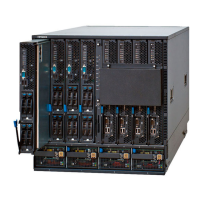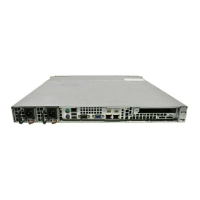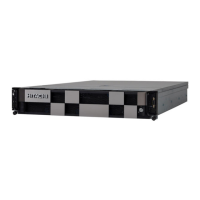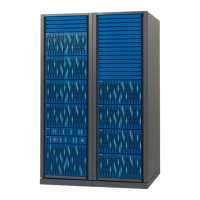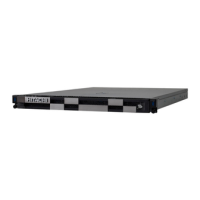Adding VLAN interfaces
VLAN interfaces are explicitly created and deleted b
y the Administrator. To
create a VLAN interface, supply the base aggregation interface name and the
VLAN tag. Then associate IP addresses with those VLAN interfaces using the
evs or evsipaddr commands.
VLAN interfaces that have been dynamically created by the deprecated vlan
command only appear in the ifconfig display. For further information on
converting a dynamic VLAN interface into a static VLAN interface, see the
VLAN conversion Appendix.
Procedure
1. To create a VLAN interface, use the vlan-interface-create command
and supply the base aggregation interface name and the VLAN tag as
shown in the examples below:
$ vlan-interface-create --interface ag1 433
Created ag1-vlan0433
$ vlan-interface-create --interface ag1 499
Created ag1-vlan0499
F
or further details on vlan-interface-create, see the CLI Reference.
2. Use the vlan-interface-show command to display the existing VLAN
interface names.
$ vlan-interface-show
ag1-vlan0433
ag1-vlan0499
F
or further details on vlan-interface-show, see the CLI Reference.
3. Associate IP addresses with the VLAN interfaces using the evs create
command. Use the evs list command to show a list of the VLAN
interfaces with IP addresses.
$ evs create -l EVS1 -i 10.0.0.10/8 -p ag1-vlan0433
$ evs create -l EVS2 -i 172.16.0.10/16 -p ag1-vlan0499
$ evs list
5 Service EVS1 Yes Online 10.0.0.10 ag1-vlan0433
6 Service EVS2 Yes Online 172.16.0.10 ag1-vlan0499
For further details on evs create and evs list, see the CLI Reference.
4. You can also use evsipaddr to associate IP addresses with VLAN
interfaces
$ evsipaddr -e 1 -a -i 192.168.1.1 -m 255.255.255.0 -p ag1-vlan0433
Configuring VLAN interfaces 45
Hitachi NAS Platform Network Administration Guide
